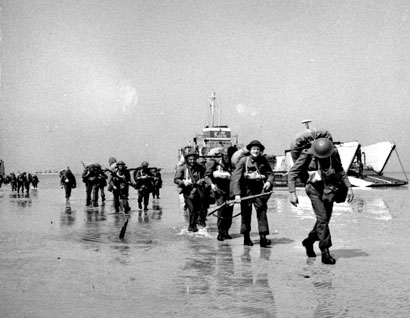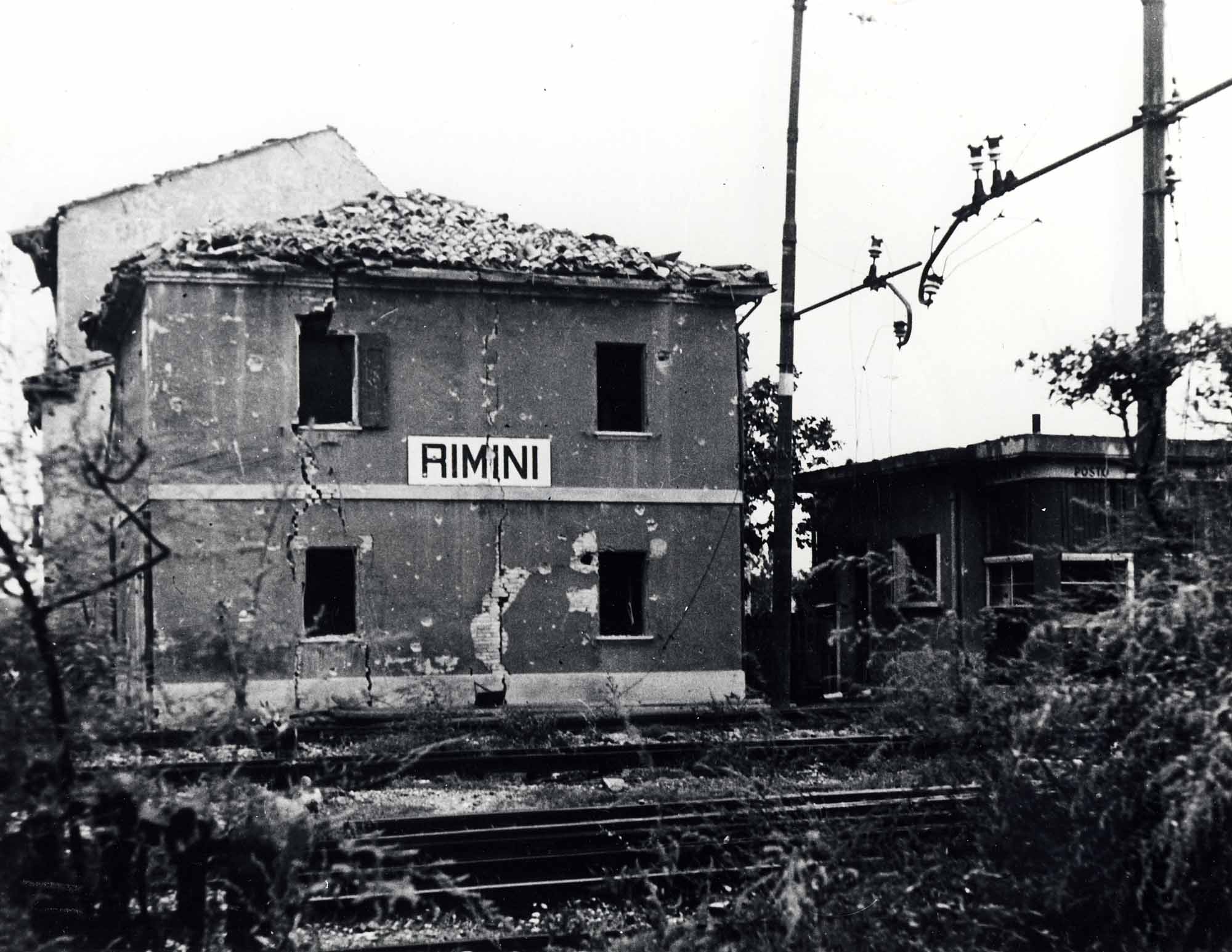
Invasion of Normandy
On 6 June 1944, Canadian, American and British forces began the liberation of Western Europe from German occupation, by launching the invasion of Normandy, France. Allied forces landed on the Normandy coastline on D-Day, and then pushed inland, beginning a nearly three-month campaign to defeat the immediate German forces opposing them, before turning east towards Belgium, Holland and the German frontier.
Soldiers of the 3rd Canadian Infantry Division came ashore at Juno Beach, and in the following days and weeks fought a series of difficult battles in the countryside south of Juno against a regiment of the German 12th SS Panzer Division.

Abbaye d'Ardenne
On 7 June dozens of Canadians with the North Nova Scotia Highlanders and the 27th Canadian Armoured Regiment (the Sherbrooke Fusilier Regiment) were taken prisoner following heavy fighting around the village of Authie. The Germans took their prisoners to the nearby Abbaye d'Ardenne, an ancient stone church where Colonel Kurt Meyer, one of the 12th SS commanders, had set up his headquarters after D-Day.
Later that night, 11 of the Canadian prisoners of war were taken into the Abbaye's garden and shot in the head. The next morning seven more POWs, all North Nova Scotia Highlanders, were taken outside the Abbaye and shot.
Château d'Audrieu
On 8 June 64 other Canadians, including several dozen members of the Royal Winnipeg Rifles, were taken prisoner during fighting near the village of Putot-en-Bessin. The prisoners were marched to the Château d'Audrieu, a Normandy estate commandeered by officers of the 12th SS. Later that day 45 of the Canadians were murdered, in batches, in the grounds of the Château.
Among the executed Canadians were George Meakin, 23, and his younger brother Frank, 20, from the tiny Prairie town of Birnie, Manitoba, both of whom had come ashore and survived the fighting of D-Day.
"This may be the last chance I get to write to you before the big day," wrote George Meakin in a letter to his mother before the invasion. "If you don't hear from me for a while don't worry... Keep on smiling and everything will turn out for the best."
The Battle of Normandy was still underway, weeks later, when news of the massacres reached Canada. "Canuck Soldiers 'Murdered,'" said one headline in the Halifax Herald that summer. "Prime Minister [William Lyon Mackenzie King] reveals horrible German atrocity."
Prosecution
After the war, the murders were examined in 1945 by United States military investigators, who recommended that five former officers of the 12th SS be tried for failing to prevent crimes against prisoners of war. Ultimately only Kurt Meyer, himself taken prisoner in 1944, was put on trial by Canada for some of the murders. Meyer was court-martialled in December 1945, convicted of inciting his troops to execute Canadian prisoners, and sentenced to death.
Meyer's sentence was commuted to life imprisonment by the Canadian government. He served five years at Dorchester penitentiary in New Brunswick before being transferred to a West German jail. In 1954, with Canada's blessing, he was set free.
Remembrance

Precisely how many Canadian POWs were executed by the Germans during the Battle of Normandy has never been clearly established. In 1998, author Howard Margolian, a former war-crimes investigator with Canada's Department of Justice, wrote about the murders in his book Conduct Unbecoming. Margolian claimed that more than 150 Canadians POWs were killed by the 12th SS. Canada's Department of Veterans Affairs says up to 156 Canadian soldiers were illegally murdered "in scattered groups, in various pockets of the Normandy countryside."
Historian Terry Copp, a Battle of Normandy expert, says there is no evidence of Canadian soldiers executing German POWs. He says that soldiers on both sides certainly killed enemy troops during the moment of surrender in the heat and chaos of battle.
"There's no doubt that we did this, and they did," Copp says. "But the point of the atrocities by the 12th SS is, these were executions that occurred long after the battle was over. At the Abbaye d'Ardenne, they put a pistol to each of [the Canadians'] heads and shot them through the back of the head."
The memory of the murdered soldiers is honoured on various commemorative plaques in the Normandy countryside. At the Abbaye d'Ardenne, a memorial in the garden where 18 executions took place is frequently covered in small maple leaf flags, left by Canadian pilgrims to the site. "They are gone but not forgotten," says the memorial inscription.

 Share on Facebook
Share on Facebook Share on X
Share on X Share by Email
Share by Email Share on Google Classroom
Share on Google Classroom


